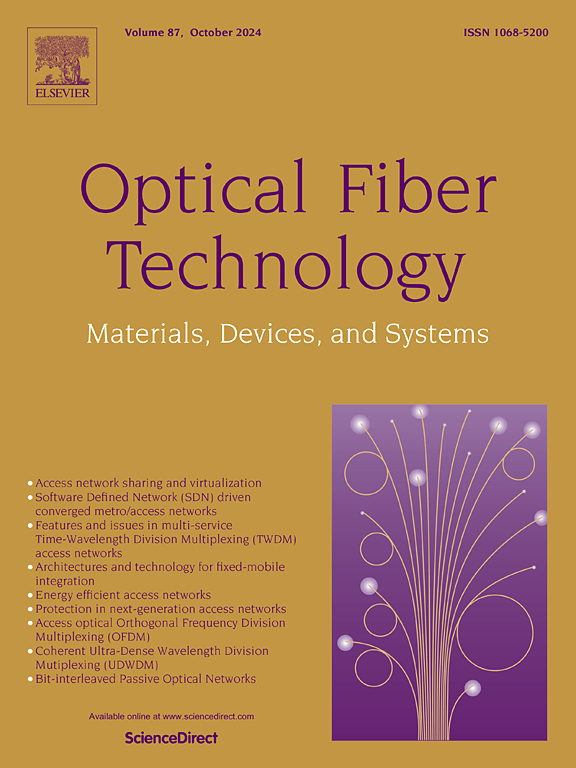Balloon-like micro-displacement sensor based on chaotic correlation fiber loop ring-down system with loss compensation
IF 2.6
3区 计算机科学
Q2 ENGINEERING, ELECTRICAL & ELECTRONIC
引用次数: 0
Abstract
We demonstrate the micro-displacement sensing using the balloon-like optical fiber to the chaotic correlation fiber loop ring down system. The balloon-like fiber is made of the bent single-mode fiber stripped of a length of coating layer to the phase difference between the core and cladding mode by the interferometer. We analyzed the displacement sensing characteristics of the balloon-like fiber used as a sensing unit theoretically and experimentally. Due to the large bending curvature of the balloon-like fiber, the loss compensation chaotic correlation fiber loop ring down system is used for sensing. The sensing characteristics of balloon-like fibers of different sizes are compared and the influence of cavity length is studied. The result shows that the balloon-like structure with a total length of 4.5 cm embodies superior sensing performance, and its maximum sensitivity can reach −0.38 μs-1μm−1 when the cavity length is set as 11.95 m. The balloon-like structure makes up for the shortcomings of the optical fiber loop ring down system in high-sensitivity micro-displacement sensing detection.
求助全文
约1分钟内获得全文
求助全文
来源期刊

Optical Fiber Technology
工程技术-电信学
CiteScore
4.80
自引率
11.10%
发文量
327
审稿时长
63 days
期刊介绍:
Innovations in optical fiber technology are revolutionizing world communications. Newly developed fiber amplifiers allow for direct transmission of high-speed signals over transcontinental distances without the need for electronic regeneration. Optical fibers find new applications in data processing. The impact of fiber materials, devices, and systems on communications in the coming decades will create an abundance of primary literature and the need for up-to-date reviews.
Optical Fiber Technology: Materials, Devices, and Systems is a new cutting-edge journal designed to fill a need in this rapidly evolving field for speedy publication of regular length papers. Both theoretical and experimental papers on fiber materials, devices, and system performance evaluation and measurements are eligible, with emphasis on practical applications.
 求助内容:
求助内容: 应助结果提醒方式:
应助结果提醒方式:


